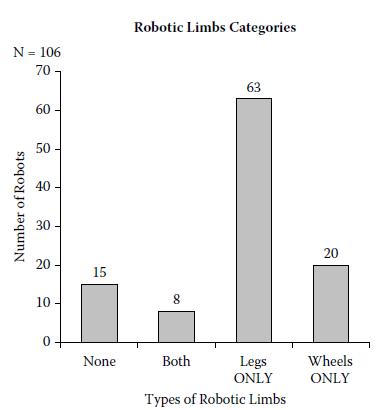Refer to the International Conference on Social Robotics (Vol. 6414, 2010), study of the trend in the
Question:
Refer to the International Conference on Social Robotics (Vol. 6414, 2010), study of the trend in the design of social robots, Exercise 2.1. The researchers obtained a random sample of 106 social robots obtained through a web search and determined the number that were designed with legs, but no wheels. Let represent the sample proportion of social robots designed with legs, but no wheels. Assume that in the population of all social robots, 40% are designed with legs, but no wheels.
a. Give the mean and standard deviation of the sampling distribution of p̂.
b. Describe the shape of the sampling distribution of p̂.
c. Find P (p̂ > .59).
d. Recall that the researchers found that 63 of the 106 robots were built with legs only. Does this result cast doubt on the assumption that 40% of all social robots are designed with legs, but no wheels? Explain.
Data from Exercise 2.1
According to the United Nations, social robots now outnumber industrial robots worldwide. A social (or service) robot is designed to entertain, educate, and care for human users. In a paper published by the International Conference on Social Robotics (Vol. 6414, 2010), design engineers investigated the trend in the design of social robots.

Step by Step Answer:

Statistics For Engineering And The Sciences
ISBN: 9781498728850
6th Edition
Authors: William M. Mendenhall, Terry L. Sincich





